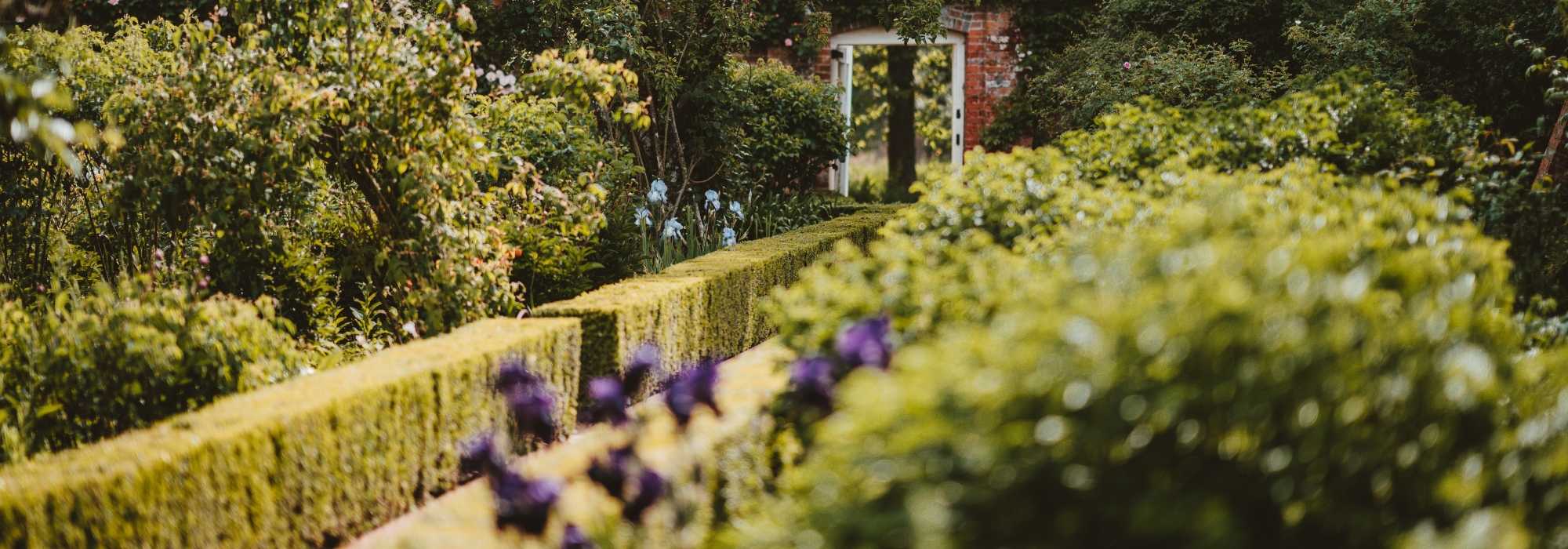
Evergreen hedges, bushes for all garden styles
Ideas and selection of bushes
Contents
The evergreen hedge is a classic in gardens. It remains green and beautiful all year round, allows you to isolate yourself from neighbours and prying eyes, and structures the garden.
When it comes to choosing, you will find that there are many evergreen hedge bushes… and that, consequently, determining the ideal variety or varieties often poses a challenge. My advice: opt for young plants that perfectly match your desires, tastes, and the style of your garden.
Low, flowering, fragrant, natural, or contemporary hedge… what are the ideal evergreen bushes for hedges? Discover our selection of bushes to create a bespoke evergreen hedge for your garden!
To learn more, check out our advice sheet: What is an evergreen tree and bush?
A low, colourful and fragrant hedge with a Provence touch
Very pretty in low hedges that “smell of Provence”, lavenders have many advantages such as resistance to drought, sun, and cold. Even when not in flower, lavender provides a beautiful display with its silver-grey evergreen foliage.
Moreover, in season, it gives a fantastic “boost” to various garden pollinators: bees, bumblebees, butterflies, …
The only downside is that in heavy, poorly drained soil, they are not very durable: you will need to replace your lavenders every four to five years.
My advice: to keep your lavender compact and floriferous, prune it quite short once a year, just after flowering.
A low hedge pruned for a chic and contemporary garden
Boxwood is now sensitive to new parasites such as Cylindrocladium buxicola, a fungus that causes black spots on leaves, Volutella buxi, another fungus that leads to the wilting of leaves and shoots, and the infamous Box Tree Moth, which wreaks havoc across France. (Virginie discusses this here: “Box Tree Moth, Identification and Treatment”)
There are now new alternatives to boxwood such as the Crenate Holly and its new selections like Ilex crenata ‘Green Hedge’ and Ilex crenata ‘Dark Green’ which perfectly mimic the shape and colour of boxwood foliage, are among the best alternatives. The Ilex crenata is an evergreen bush that grows slowly and tolerates very shady conditions. It has discreet flowers in spring followed by small black berries that persist throughout winter.
And what do you think of Lonicera nitida or the box honeysuckle, which is much less temperamental than boxwood? The box honeysuckle grows in all soils and situations. The downside is that it grows much faster than boxwood, so you will need to prune it more regularly, unless you appreciate its gangly appearance.
If you don’t like either honeysuckles or crenate hollies, that’s fine! You can also try small euonymus like Euonymus fortunei with various foliage colours.

Lonicera nitida ‘Red Tips’ – Euonymus japonicus ‘Microphyllus Albovariegatus’ – Ilex crenata ‘Golden Gem’
Discover other Hedge shrubs
View all →Available in 0 sizes
Available in 1 sizes
Available in 1 sizes
Available in 1 sizes
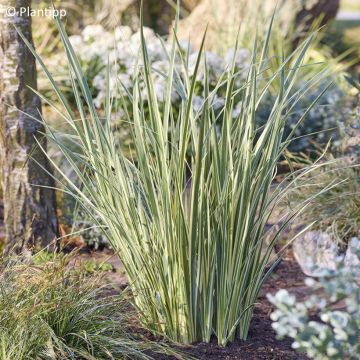
Available in 1 sizes
Available in 1 sizes
Available in 1 sizes
Available in 1 sizes
Available in 2 sizes
Available in 1 sizes
A beautiful conifer hedge for a garden with character
If you’re looking to stand out from the mundane hedges of cypress and thuja, yew (Taxus baccata in Latin) is an excellent choice! We may have somewhat forgotten it, but this lovely conifer native to our regions, which grows a bit slowly, is truly spectacular when trimmed into a hedge and is making a comeback in our gardens. And that’s a good thing because this sacred tree truly deserves to reclaim its rightful place.
Compared to Cupressocyparis leylandii or Thuja plicata, yew can withstand very severe pruning down to old wood, adapts to all soils and situations. Moreover, it can provide shelter for birds during nesting and serve as a supplementary larder when seeds surrounded by aril (the fleshy red part) appear. As birds cannot digest the seed, they facilitate its dispersal without harming their health.
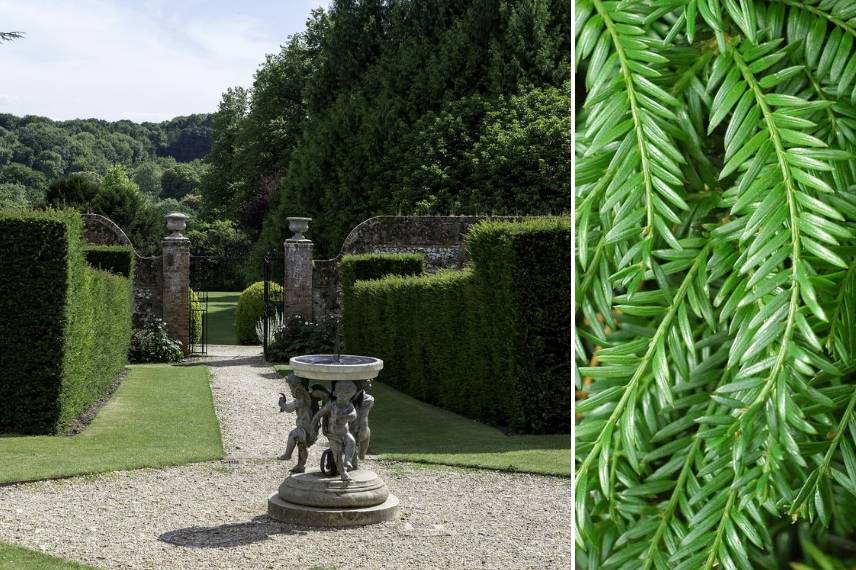
Persistent hedge of Taxus baccata
A tapetum hedge for a multicoloured garden
Play with different colours and textures for a tapestry effect. What a great idea! Green, red, yellow, and even silver-grey or variegated foliage… It’s entirely feasible.
If, on the other hand, your garden style is more zen and favours foliage that plays with different shades of green, then opt for a monochrome combination for your hedge. A few evergreens of different essential oils but remaining within the same colour range will be perfect.
A flowering hedge for a romantic garden
Evergreens that bloom? Of course, it’s possible. Pink, red, white, yellow, and even… blue flowers. There are many species and varieties of flowering evergreens. Here is a small selection of our favourites for hedges at least two metres high:
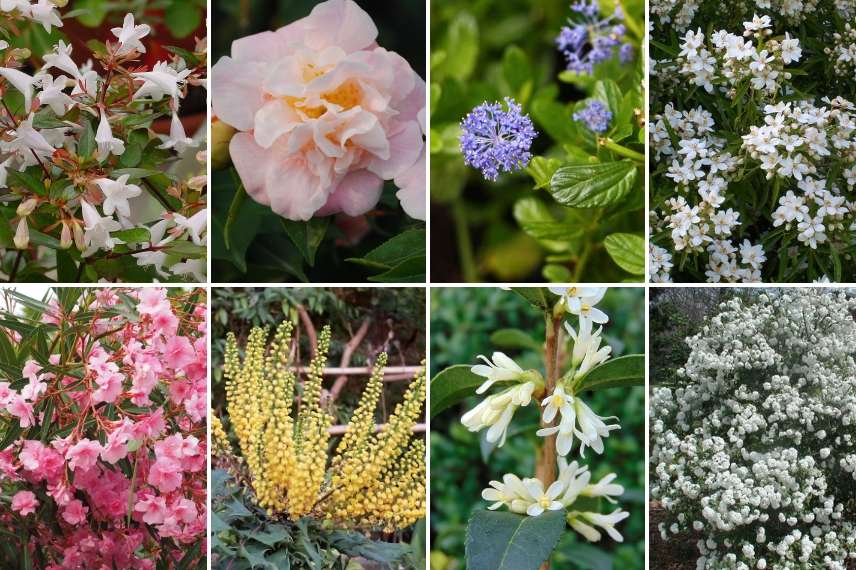
Abelia grandiflora – Camellia ‘High Fragrance’ (©Stervinou) – Ceanothus impressus ‘Victoria’ – Choisya ternata ‘Aztec Pearl’ – Nerium Oleander (only for mild climates) – Mahonia x media ‘Charity’ – Osmanthus burkwodii – Viburnum pragense
A scented hedge for an olfactory journey
If, like me, your other senses apart from sight are particularly developed, focus entirely on evergreen shrubs with fragrant flowering. A persistent ceanothus (some are deciduous), a mahonia, a Mexican orange blossom, and why not a small winter honeysuckle, a semi-evergreen that will delight you with its fragrance during the dreary season!
And even a simple little Ligustrum ovalifolium that smells like the beginning of the “great holidays” when it starts to bloom. It’s my own “madeleine de Proust”…
An ecological hedge for a natural garden
Natural environments that are welcoming to wildlife and flora are dwindling in our time. Let’s make sure to foster a hospitable garden for our dear little creatures (insects, birds, spiders, micro-mammals, and many others…). All it takes is some bushes providing protection against predators for nesting, and it’s even better if the bush is thorny! Food is also essential, especially during lean periods: most fruits from evergreen bushes reach ripeness at the end of the season and remain for a while in winter. And finally, nectar for pollinating insects (bumblebees, bees, hoverflies, and, less commonly known, butterflies).
Here is a non-exhaustive list of what you can plant as evergreen bushes in your free hedge to help nature:
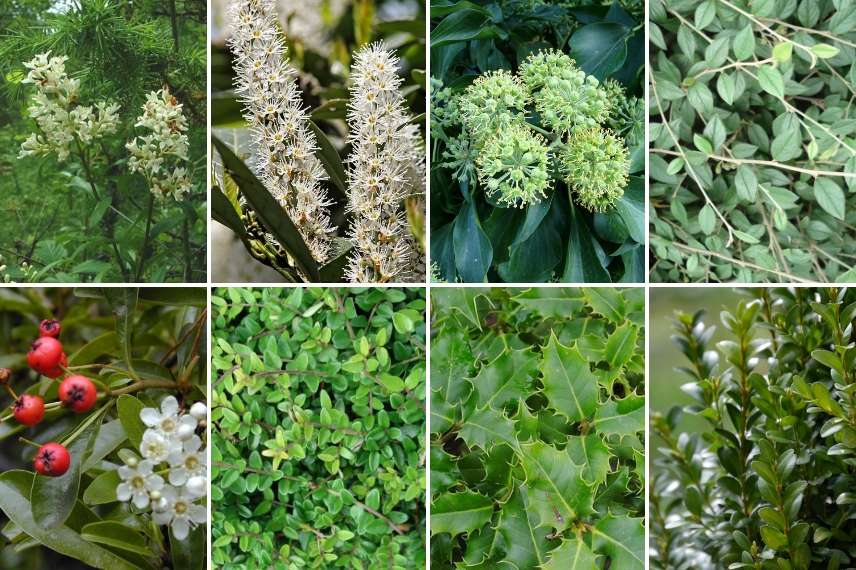
Ligustrum vulgare ‘Atrovirens’ – Prunus laurocerasus ‘Otto Luyken’ – Hedera helix ‘Arborescens’ – Cotoneaster franchetii – Pyracantha angustifolia – Lonicera nitida – Ilex aquifolium – Buxus sempervirens (left free and unpruned!)
→ Learn more with Olivier’s article How and why to create a countryside hedge?
A marcescent hedge, another form of persistence
Between deciduous foliage and evergreen foliage, there exists an intermediate form: marcescent foliage. A quick reminder: marcescent foliage is foliage that, although technically dead, remains on the tree throughout the entire bad season. This foliage only falls once the renewal of leaves begins in spring (or during very strong winds…). Some trees do this and are commonly used in hedges: beech, hornbeam, and oak. What benefit would you say? Well, you thus obtain a hedge that is almost evergreen but much less monotonous than the latter, as the colours of the foliage change throughout the seasons.
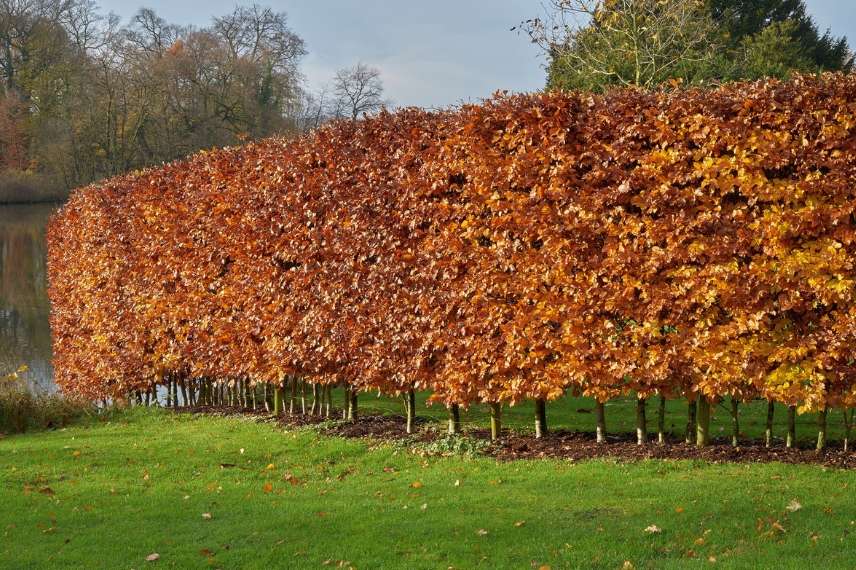
Example of a beech hedge with marcescent foliage
Other trees and bushes can be classified as marcescent but are not used in hedges.
- Subscribe!
- Contents
































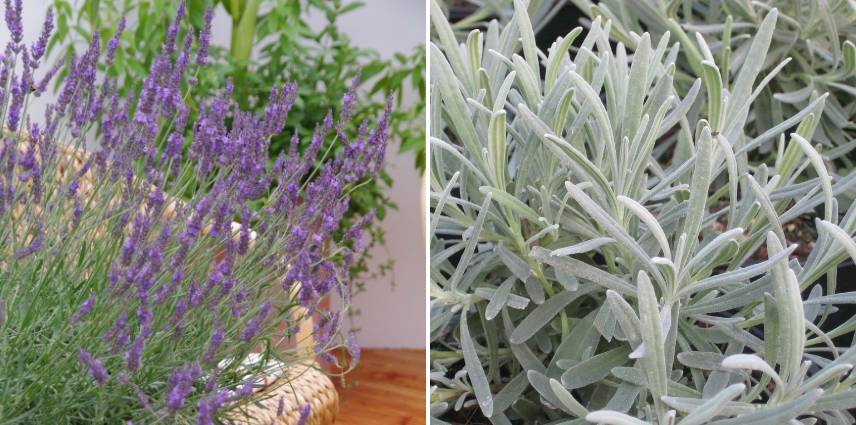




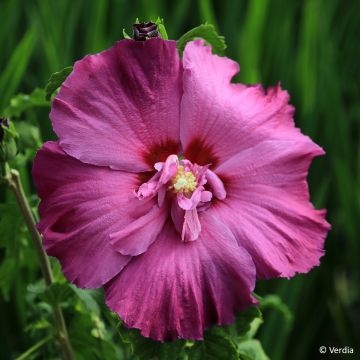
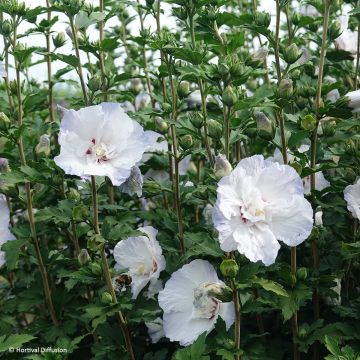


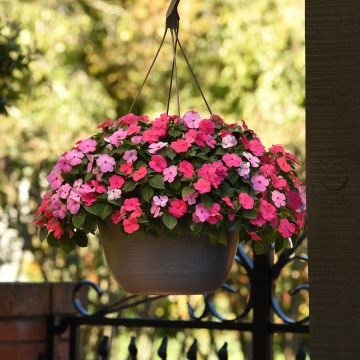
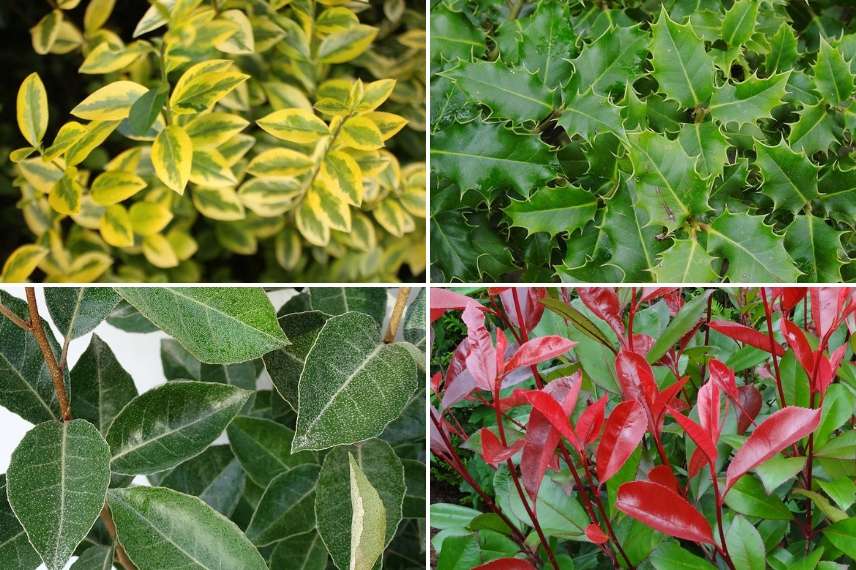
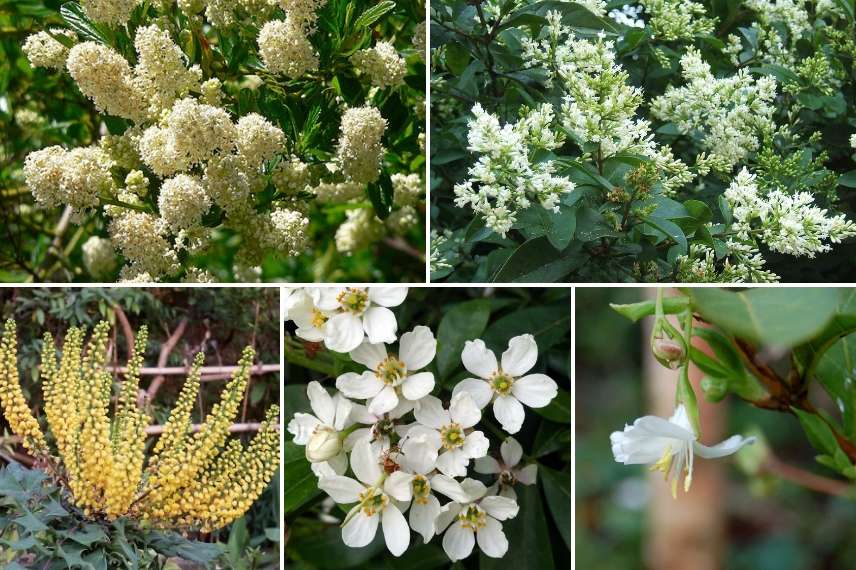
Comments